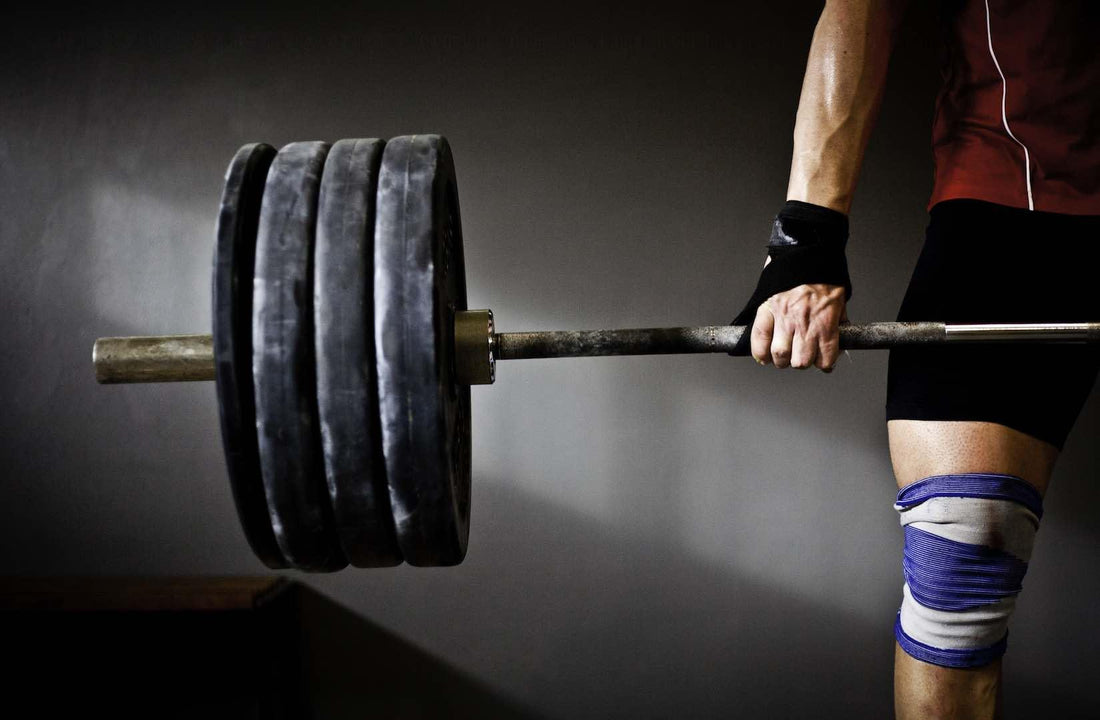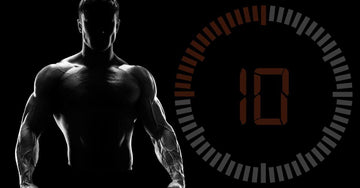

Eccentric Training - Don’t Be Negative Regarding the Negative
Table of Contents
When weight lifting, many consider only the movement or exercises, with no thought of the speed of the lift, eccentric portion, or time under tension. This article is geared to change your thought process on how you lift. I’m going to discuss eccentric muscle actions and the importance to an overall lifting regimen.
So why be negative about negatives? The misconception is there, people think only of the force , (The positive) , or the amount of weight lifted or there rep ranges and sets. But not so fast!
I’m going to discuss eccentric muscle actions and the importance to an overall lifting regimen. First, here are the three types of Lifting:
1. Concentric muscle action
occurs when the muscle contracts (shortens), such as when you press the bar for a military press.
2. Isometric muscle action
is when a muscle is activated and develops force, but no movement at the joint occurs. Think about if you were to try to push over a building; you are generated force, although there is not joint movement because it is obviously impossible.
3. Eccentric muscle action
( the Negative) ,occurs when the muscle lengthens in a controlled manner. Muscles can only shorten or lengthen in a controlled manner, and if its not we consider this dangerous to the muscle and the joint. .; Think about the lowering portion of a bicep curl; this is a prime example of a eccentric or negative contraction.
Negatives are such that, the eccentric piece of the motion, usually timed on a count system to ensure the part of the movement is longer than the concentric piece or the positive. Which is contrary to the normal lifting speed.
Out of the three phases of lifting as discussed, Training the negatives are usually neglected but can stimulate major changes due to a change in muscle fiber recruitment, and confusion. So if you want to make changes fast, don’t miss out on this.
How It Works
Here’s how it works: Micro-trauma occurs during the eccentric contraction of the muscle while it is contracting to maintain control. This cellular damage, in turn, stimulates the release of local growth factors and revs up the anabolic machinery to build muscle.
In fact, a muscle is approximately 75% stronger during the lowering of a weight as compared to lifting it.
This observation led to the use of heavy negatives, sometimes relying entirely on spotters to lift the weight while the trainee was responsible for solely the lowering.
The alleged superiority of pure negatives remains largely theoretical; however, to reap the benefits of negatives without relying on spotters and supramaximal weights, simply control the eccentric component of the lift.
Imagine that, the eccentric portion of the lift, is actually stimulating the muscle more than the actual lift itself, or the concentric portion.
Who Knew
Your body can tolerate up to 1.75 times more weight eccentrically than it can concentrically.. It only makes sense to take advantage of this, doesn’t it? That means an increase of strength, more muscle fiber recruitment, more muscle breakdown.
If you emphasise the eccentric portion of your lifts, then you’re certain to increase muscle growth. Guess what more muscle growth is going to get you? That’s right, more strength and that means greater potential for hypertrophy (which is always a bonus) and greater potential to develop power. .
I’m not suggesting you do eccentric only training, though. I’m suggesting you take advantage of your body’s potential to handle more weight while still doing the full movement. We’ll get on to how you’re going to do this later, but note that combining the two has been proven to have significant effects on muscle growth.
As you know by now with eccentric training you can lift a hell of a lot more weight than you would normally. The great thing about this is it allows you to workout at a higher intensity. Higher intensity means greater stress, which means greater adaptation. Here’s the beauty of that – the anabolic response from the heavy loads forces greater recruitment of muscle fibres, which by default will allow you to move more weight on the concentric (upward) portion of the lift.
2. Greater Muscle Damage
This is why bodybuilders tend to take advantage of slow, grinding reps with moderate weights. It tears their muscles apart and the hope is they will repair and grow even further.
The difference is you are going to use heavy weight and you’re not going to grind out the concentric portion of the lift. In fact, more often than not the concentric portion will be easier than the heavy eccentric.
What I am trying to say, we are all stronger on the eccentric portion of the exercise that we are training, but don’t always realize it because the training of negatives is often neglected.
How you ask? You have two options:
1. Have a spotter (sometimes two) on hand to aid you after the heavy eccentric.
2. Use lifting aids such as elastic bands, chains or eccentric hooks.
Emphasizing the lowering portion of your lift while still doing the full lift will lead to even greater muscle growth and in turn strength, power and connective tissue development.

3. Stronger Connective Tissue
The stronger your connective tissue (ligaments and tendons), the greater your immunity to injury. Are you under heavy loads all the time in your sport? Do you get hit hard? You need to strengthen your body, not just your muscles. Taking advantage of eccentrics is a great way to do this.
4. You Use Less Energy
Heavier weight uses less energy? That’s nonsense. Again, there is beauty in training eccentric portions of the lift. Most of your energy is used when you’re pushing or lifting a weight. This becomes useful because you are going to be able to do more work, which means your body will improve, your strength will improve, your size will improve, and your power will improve.
5. Greater Flexibility
This one is hard to believe, but there has been a ton of research to show eccentric training actually increases your flexibility. No way, right?

Here’s how it works. The negative portion of the lift causes growth of your muscle fibers, which increases the length of your muscles by increasing the sarcomeres in series within the muscle. Too technical? No problem. Just take my word for it – heavy negatives have been show to promote greater flexibility, According To the ISSA and ACE.
Don’t just take my word for it though. Try it for yourself. Finally, we can dispel the myth that when you lift weights you get less flexible.
6. Greater Power
I’ve already told you that the stronger you are the more potential there is for greater power development. That just makes sense, doesn’t it?
Usually when you are training for power, you will significantly drop your weights to between 30-60% of your 1RM. With heavy negatives you’re going to increase your 1RM, right? So again, by default, you will use heavier weights during your power training, which can only lead to one thing – you being more explosive.
A great way to ensure you remain explosive is to superset your heavy negatives with something fast. Here are two examples:
1. Heavy eccentric squat with low rep box jumps.
2. Heavy eccentric bench press with low rep explosive push ups or med ball tosses.

Closing Thoughts
This type of training shouldn’t be used year round. Incorporate it into your program periodically to stimulate modest increases in your strength. I highly recommend you do it during your off season. Remember, although you save energy during eccentrics, you are still doing huge amounts of damage to your muscle fibers. Doing this in season will upset your ability to recover. Done correctly, you should expect to get stronger and faster.
Summary
Here are some take-home points. The top 9 reasons you should include negatives:
1. If you’re not using negatives in your training, start, this will stimulate changes immediately.
2. Muscles produce the most force during the eccentric portion of the movement (meaning the negative).
3. You can lower (think on the way down in the bench press much more weight than you can lift. An example of a great exercise to start with and food for thought.
4. Get a spotter to truly test your “negative” strength.
5. Don’t overuse negatives or else you’ll quickly over do it and possibly strain the muscle.
6. Make sure you’re eating enough calories and protein to help recover and using glutamine, and other Infinite lab recovery complexes.
7. If you’re like the masses, your chest has an indentation from bouncing the bar.
8. You have to “Think Negative” to Grow Positive.
9. It’s a new stimulus for the body, which in and of itself, is important.

















